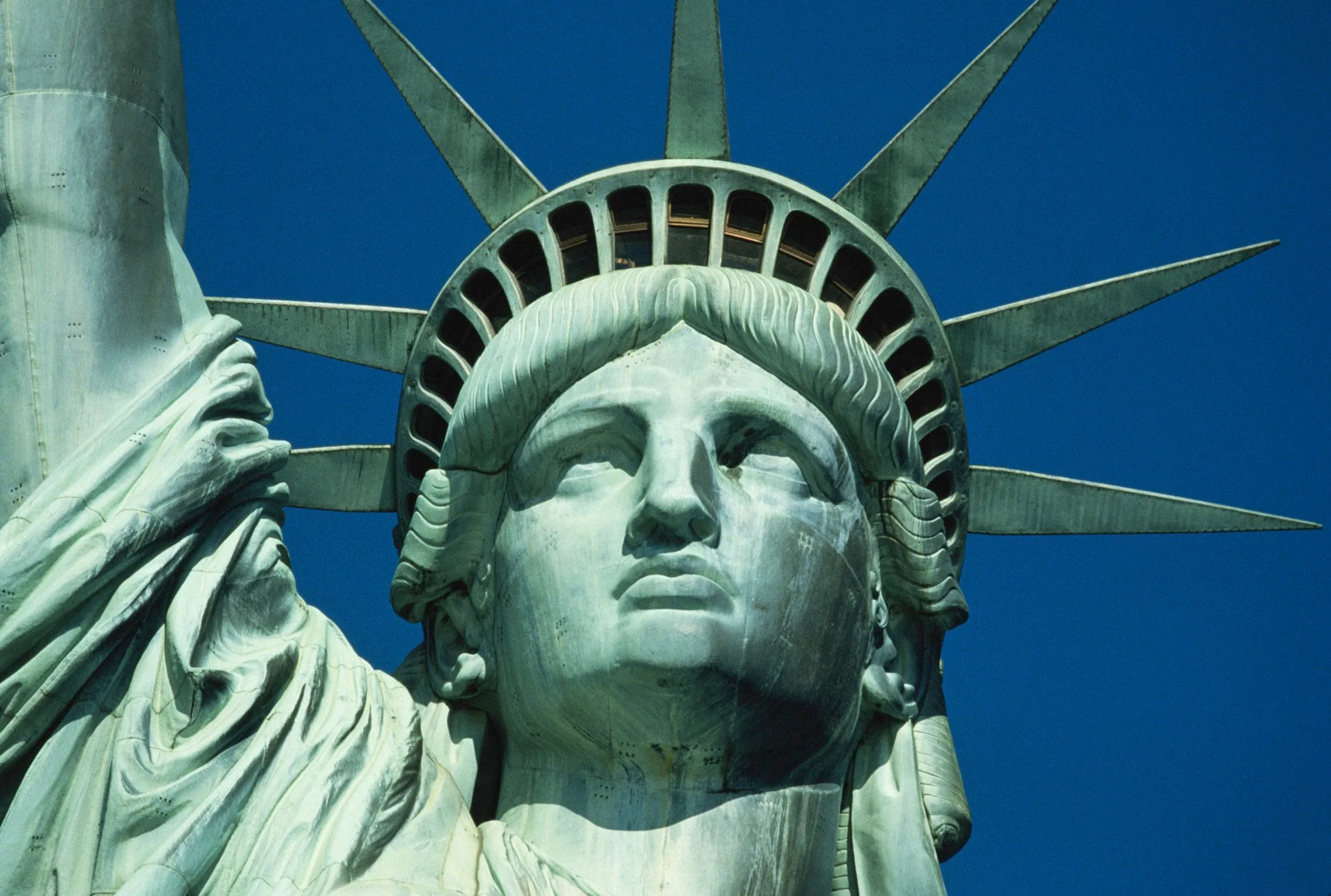Did you know that the Statue of Liberty was supposed to be a different color? When it was first built, it was a shiny copper color. But over time, it turned green. This wasn’t a mistake, it was actually caused by a chemical reaction between the copper and the air. This green layer is called a patina, and it’s actually what protects the statue from rusting. So, not only is the Statue of Liberty a symbol of freedom and democracy, but it’s also a testament to the power of chemistry!
Did They Know the Statue of Liberty Would Turn Green?
You bet they did! The designers of Lady Liberty weren’t caught off guard by her color change. They knew from the get-go that her copper skin would undergo a transformation. In fact, they planned for it! You see, copper, when exposed to the elements, develops a protective layer called a patina. This patina, aside from giving the statue its iconic green hue, shields the copper underneath from corrosion, ensuring the Statue’s longevity.
So how does this color change happen? It’s all thanks to a chemical reaction between the copper, oxygen, and a bit of moisture in the air. This reaction creates a new layer on the statue made of copper carbonate, which gives it that distinctive green shade.
But here’s the thing: the Statue’s green coat isn’t static. It’s constantly evolving! The exact shade of green can shift subtly depending on the weather, air quality, and even the time of year. Think of it like the Statue’s own ever-changing outfit!
Bonus Fun Facts:
- The Statue of Liberty’s copper skin is surprisingly thin, just 3/32″ thick!
- This majestic lady weighs a whopping 450,000 pounds and stretches 305 feet into the sky.
- She was a gift of friendship from the people of France to the United States.
- The Statue of Liberty is recognized and loved around the world as a symbol of freedom and democracy.
Did you know that the Statue of Liberty is home to some very creepy facts? She is not always as she appears today creepy facts about the statue of liberty as she used to be statue of liberty before green. She is worth more than you perhaps think how much is the statue of liberty worth.
How long did it take for the Statue of Liberty to turn green?
Think about Lady Liberty, shining bright back in the day. You might be surprised to learn that she wasn’t always green! When this majestic symbol first arrived in New York Harbor, she was actually a dull, brownish copper color. It took about 30 years for her to fully transform into the green goddess we know today.
This incredible makeover was a natural process called oxidation. Basically, the copper skin of the statue reacted with the air and water around it. This reaction created a new layer on the surface, a kind of protective coating called a patina. That patina is what gives the Statue of Liberty its unique green color!
So, while it took a few decades, the change wasn’t just about the color; it was about the statue becoming a true icon, shaped by time and the elements.
What chemicals caused the Statue of Liberty to change color?
Imagine this: It’s 1886, and the Statue of Liberty has just been unveiled to the world, a shining beacon of reddish-brown copper. But fast forward a few decades, and something’s different. Lady Liberty is rocking a new look – she’s gone green! What happened?
Well, it turns out our beloved statue got a little makeover from Mother Nature herself. It’s all thanks to a natural process called patination. Think of it like this: when copper, the metal that makes up the Statue of Liberty, hangs out with air and water for too long, they have a little chemical reaction party. The copper gets a bit oxidized, kind of like an apple slice turning brown, and forms a new layer on its surface called copper oxide.
But the party doesn’t stop there! This copper oxide is a bit of a social butterfly and decides to mingle with carbon dioxide and water vapor hanging around in the air. The result of this mingling is a brand new compound called copper carbonate, which happens to have a lovely green hue. Voila! Our Statue of Liberty now has a stylish green coat.
This whole makeover wasn’t an overnight thing, though. We’re talking decades of slow and steady transformation. The exposed parts of the statue, the ones catching all the sun and rain, changed color faster, eventually catching up with the rest. By the early 1900s, Lady Liberty was rocking her full green glory, a look she’s confidently held onto ever since.
And you know what the best part is? This green coating isn’t just a fashion statement. It’s like a superhero shield, protecting the statue from rust and corrosion. Talk about a win-win! So next time you see a picture of the Statue of Liberty, remember: that iconic green isn’t just paint; it’s a symbol of time, nature, and a touch of chemistry magic.
Did the architects consider the green patina before designing the statue?
Bartholdi and Eiffel, the masterminds behind Lady Liberty, had no clue she’d eventually sport a vibrant green hue. Imagine their surprise! When unveiled in 1886, she flaunted her natural copper glow, a reddish-brown spectacle.
This dramatic makeover wasn’t a paint job, but Mother Nature showing off her artistry. Think of it like this: copper, exposed to air and water over time, undergoes a transformation. It’s a gradual process, like rust forming on an old bike, but instead of a flaky mess, copper forms a protective layer called a patina. This patina, composed of copper carbonate, is what gives the Statue of Liberty her unique verdigris shade. It took about three decades for the transformation to fully take hold, finally reaching the iconic green we know and love around 1920.
Interestingly, this green cloak isn’t just a pretty face; it’s vital for the statue’s longevity. The patina acts like a shield, preventing further damage and preserving the copper underneath. Talk about a happy accident!
FAQ
Q1: Did the architects of the Statue of Liberty anticipate that it would turn green?
A1: No, the architects did not foresee that the statue would turn green. They expected it to retain its copper color.
Q2: What caused the Statue of Liberty to turn green?
A2: The green color is due to a natural process called patination. The copper reacts with oxygen and water vapor in the air to form a green patina, which protects the copper from further corrosion.
Q3: How long did it take for the Statue of Liberty to turn green?
A3: The transformation from copper to green patina took decades to complete. By 1920, the statue had fully turned green.
Q4: Why didn’t the architects paint over the green patina?
A4: The green patina is a protective layer that shields the copper from damage. Removing it would expose the copper to corrosion and degradation.
Q5: Is the green patina permanent?
A5: Yes, the green patina is a permanent feature of the Statue of Liberty. It will continue to protect the copper for centuries to come.
- Unraveling Einstein’s Legacy: Who Inherited His Genius? - July 14, 2025
- Unlock Einstein’s Family Tree: Bernhard Caesar & Untold Stories - July 14, 2025
- Unveiling Bernhard Caesar Einstein: His Life & Albert Einstein’s Legacy - July 14, 2025
















